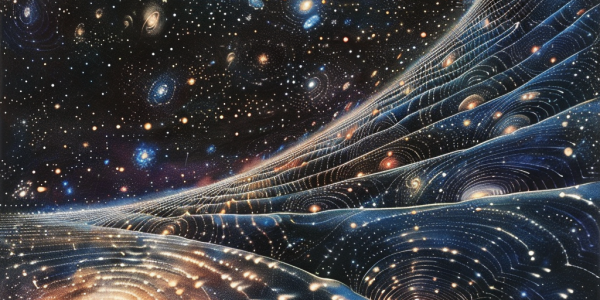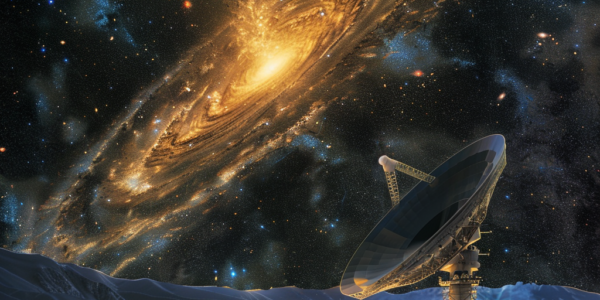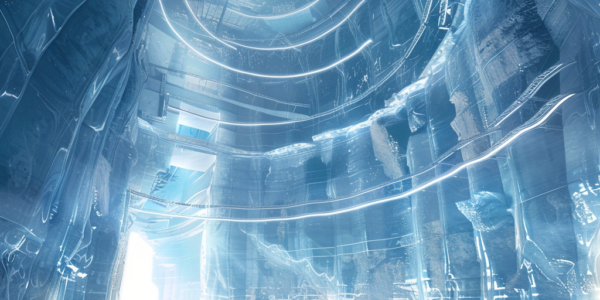Coffee and Turbulence: Uncovering a Surprising Connection
A groundbreaking study published in Nature Physics reveals a surprising connection between brewing coffee and understanding turbulence. Led by Nigel Goldenfeld and Björn Hof, the research sheds new light on transitions between laminar and turbulent flows, delving into the problem using statistical mechanics. By drawing an analogy between fluid flow and coffee percolation, the study offers a unique insight into this complex phenomenon, showcasing the interdisciplinary nature of scientific research.
New Discoveries in Physics: The Possibility of a Warp Drive
Recent discoveries in the field of physics have suggested the possibility of a warp drive within the confines of known physics, offering potential solutions for faster-than-light travel. Applied Physics group of scientists introduces the concept of a constant velocity warp drive, revolutionizing space travel and changing the conversation around warp drives. By utilizing gravity to manipulate space-time, this new approach to warp drive technology opens up exciting possibilities for the future of space exploration.
New Study Reveals Potential ‘Glitch’ in Einstein’s Theory of Relativity
A recent study unveils a ‘cosmic glitch’ in Einstein’s theory of relativity, challenging our understanding of gravity on cosmic scales. This unexpected finding could offer new insights into the universe’s mysteries, potentially reshaping established notions in astrophysics.
New Theory Proposes Universe as Massive 4X Strategy Game
A recent physics paper proposes a new theory suggesting that our reality may be similar to a massive 4X strategy game. Dr. Melvin Vopson’s research explores the concept of information theory and its relation to our existence, introducing the second law of information dynamics. This theory posits that information is equivalent to energy and possesses mass, potentially solving cosmological mysteries. While lacking concrete evidence, Dr. Vopson’s work prompts contemplation about a universe governed by a computational framework, challenging established beliefs and raising intriguing possibilities for the nature of reality.
Event Horizon Telescope Aims to Capture First-Ever Black Hole Movie
The Event Horizon Telescope captured the first-ever image of a black hole five years ago, and now astronomers are attempting to create the first-ever movie of a black hole. More than 400 scientists are collaborating on this project, aiming to make the video by 2026. The appearance of black hole M87* changes over time, and EHT is working on capturing these changes to create a moving picture.
Physicists Capture Direct Observational Evidence of Wigner Crystal, a Quantum Phase of Matter
Physicists have achieved a significant breakthrough in capturing direct observational evidence of a Wigner crystal, a peculiar form of matter proposed by theoretical physicist Eugene Wigner almost 90 years ago. This crystal, made up of free electrons forced together in a neat, crystalline lattice without atoms, has long been a subject of fascination and study. Al Yazdani, a physicist from Princeton University, expressed the significance of visualizing the Wigner crystal, stating that it not only confirms many of its properties but also enables new avenues of study that were previously inaccessible. The visualization of the Wigner crystal provides a unique opportunity to delve into the behavior of this quantum phase of matter, shedding light on its formation and properties. This breakthrough opens up new possibilities for further exploration and understanding of the fundamental nature of matter.
New Technique Uses Synchrotron X-Ray Light to Digitize Historic Audio Tapes
Researchers are developing a groundbreaking technique that utilizes synchrotron X-ray light to digitize historic audio tapes without causing damage, preserving rare recordings, including treasures from the Montreux Jazz Festival archive. The method aims to address the ongoing challenge of digitizing analog magnetic media before they become unplayable, with a physicist at PSI leading the development of a non-destructive digitization method using X-ray light to achieve the highest quality results.
Renowned Physicist Peter Higgs Passes Away, Leaving Lasting Legacy in Particle Physics
Renowned physicist Peter Higgs, known for his groundbreaking work on the Higgs boson, has passed away. His theory in the 1960s aimed to explain why atoms have mass, leading to the discovery of the ‘God particle’ in 2012. Despite initial struggles, his contributions to particle physics have left an indelible mark on scientific understanding.
Physicist Develops Equation to Predict Melting Points of Substances
Physicists have long been intrigued by the question of when a substance will melt, and now, a breakthrough may have provided the answer. Kostya Trachenko at Queen Mary University of London has developed a new equation that can predict the temperature and pressure needed to melt any solid substance into a liquid. This development could have far-reaching implications for various fields, including manufacturing, materials science, and engineering.
Scientists Search for Evidence of Quantum Gravity at South Pole
Scientists are embarking on an ambitious quest to unravel the mysteries of the universe by searching for evidence of quantum gravity at the South Pole. A recent paper published in Nature Physics proposes using neutrino data from the IceCube Neutrino Observatory at the South Pole to potentially uncover evidence for quantum gravity. Neutrinos, often referred to as ‘ghost particles,’ are electrically neutral and almost massless, enabling them to traverse vast distances through the universe without significant interactions.










